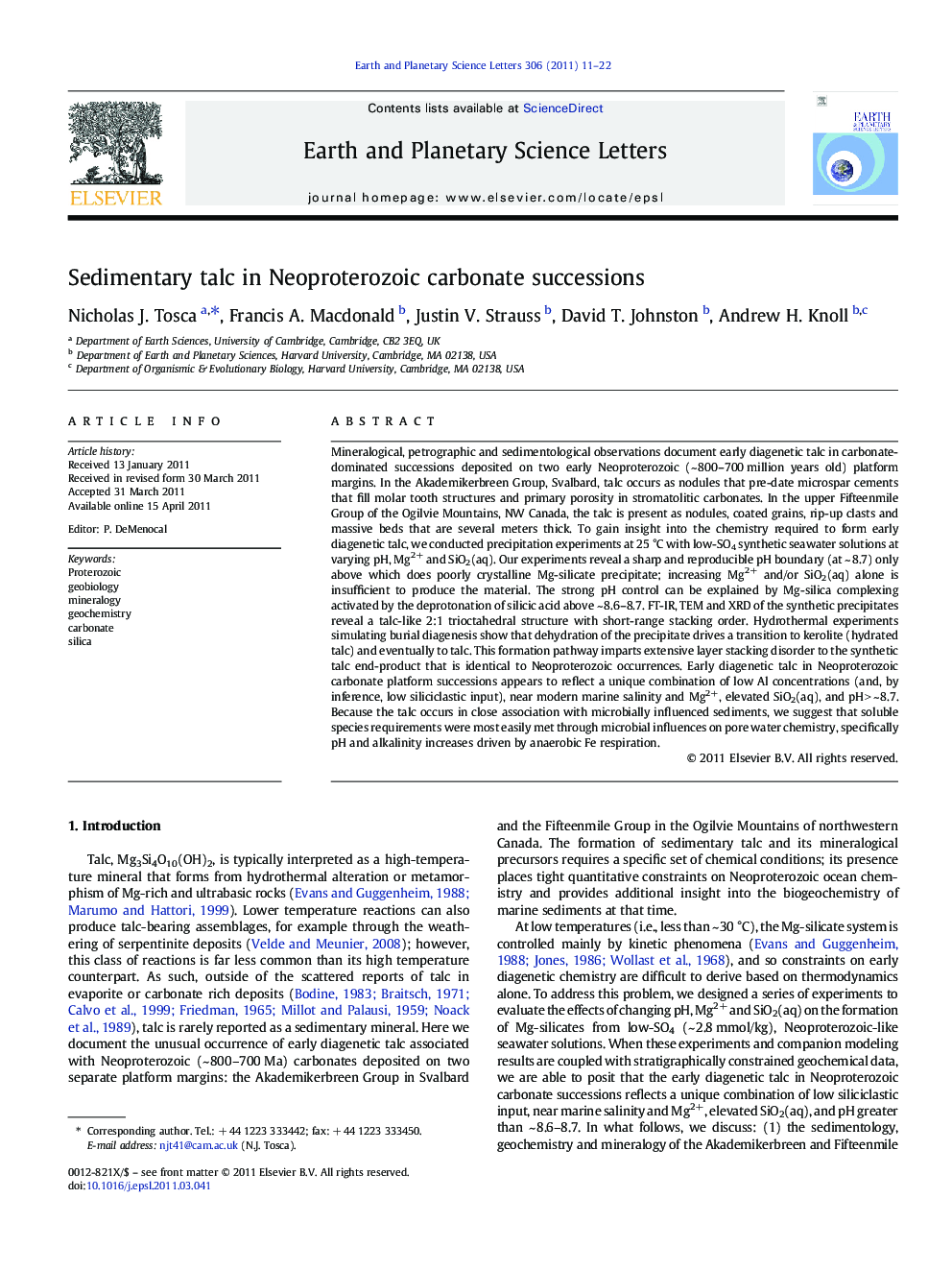| کد مقاله | کد نشریه | سال انتشار | مقاله انگلیسی | نسخه تمام متن |
|---|---|---|---|---|
| 4678059 | 1634828 | 2011 | 12 صفحه PDF | دانلود رایگان |

Mineralogical, petrographic and sedimentological observations document early diagenetic talc in carbonate-dominated successions deposited on two early Neoproterozoic (~ 800–700 million years old) platform margins. In the Akademikerbreen Group, Svalbard, talc occurs as nodules that pre-date microspar cements that fill molar tooth structures and primary porosity in stromatolitic carbonates. In the upper Fifteenmile Group of the Ogilvie Mountains, NW Canada, the talc is present as nodules, coated grains, rip-up clasts and massive beds that are several meters thick. To gain insight into the chemistry required to form early diagenetic talc, we conducted precipitation experiments at 25 °C with low-SO4 synthetic seawater solutions at varying pH, Mg2+ and SiO2(aq). Our experiments reveal a sharp and reproducible pH boundary (at ~ 8.7) only above which does poorly crystalline Mg-silicate precipitate; increasing Mg2+ and/or SiO2(aq) alone is insufficient to produce the material. The strong pH control can be explained by Mg-silica complexing activated by the deprotonation of silicic acid above ~ 8.6–8.7. FT-IR, TEM and XRD of the synthetic precipitates reveal a talc-like 2:1 trioctahedral structure with short-range stacking order. Hydrothermal experiments simulating burial diagenesis show that dehydration of the precipitate drives a transition to kerolite (hydrated talc) and eventually to talc. This formation pathway imparts extensive layer stacking disorder to the synthetic talc end-product that is identical to Neoproterozoic occurrences. Early diagenetic talc in Neoproterozoic carbonate platform successions appears to reflect a unique combination of low Al concentrations (and, by inference, low siliciclastic input), near modern marine salinity and Mg2+, elevated SiO2(aq), and pH > ~ 8.7. Because the talc occurs in close association with microbially influenced sediments, we suggest that soluble species requirements were most easily met through microbial influences on pore water chemistry, specifically pH and alkalinity increases driven by anaerobic Fe respiration.
Research highlights
► Early diagenetic talc occurs with carbonates on two early Neoproterozoic platforms.
► Early diagenetic talc requires specific chemical conditions to form.
► Precipitation experiments with synthetic seawater form Mg-silicate at pH > 8.7.
► Hydrothermal treatment shows Mg-silicate dehydrates to talc upon burial diagenesis.
► Microbial influences on pore water chemistry drove Neoproterozoic talc formation.
Journal: Earth and Planetary Science Letters - Volume 306, Issues 1–2, 1 June 2011, Pages 11–22